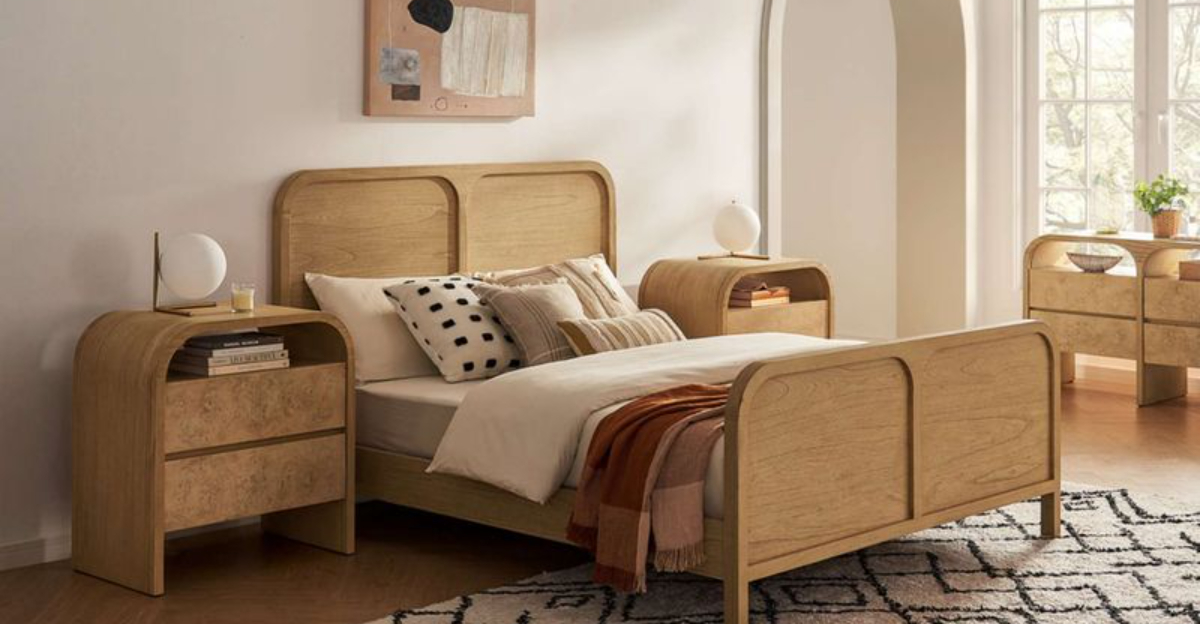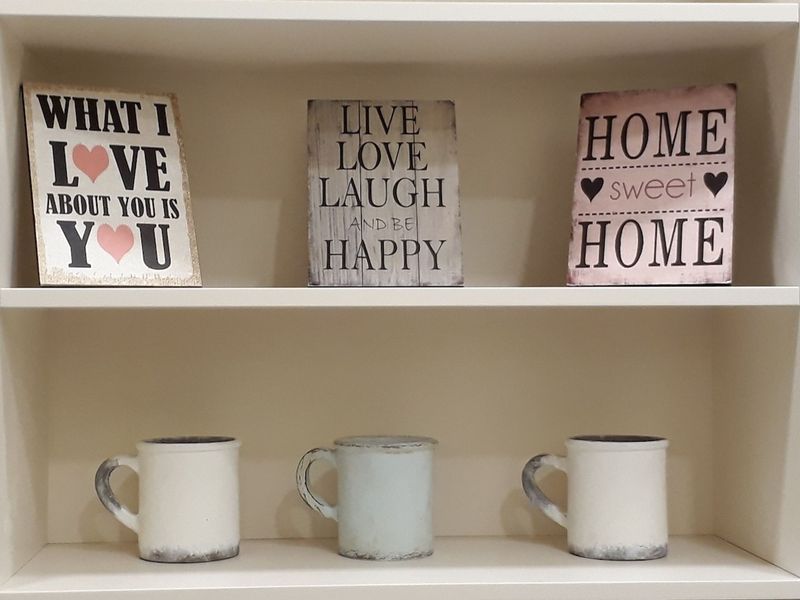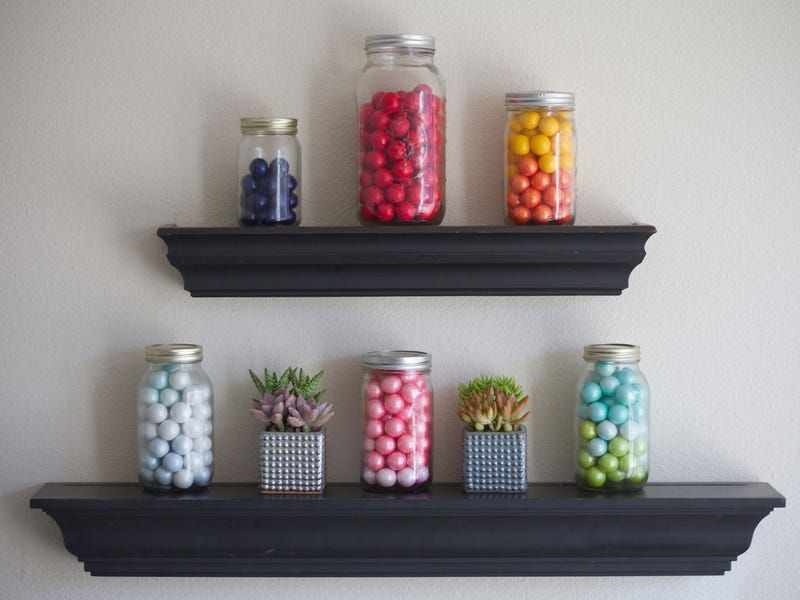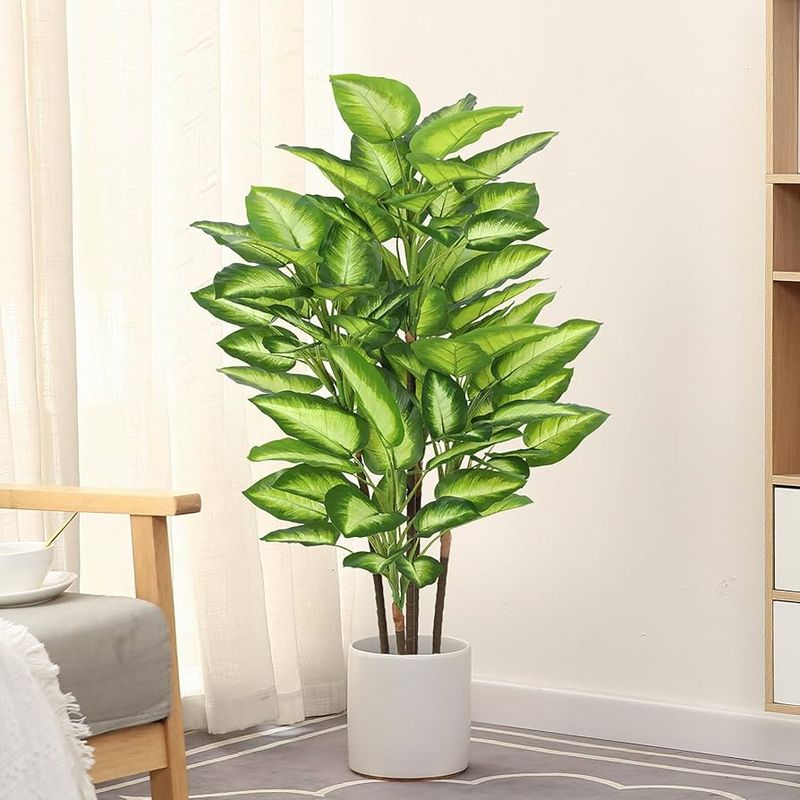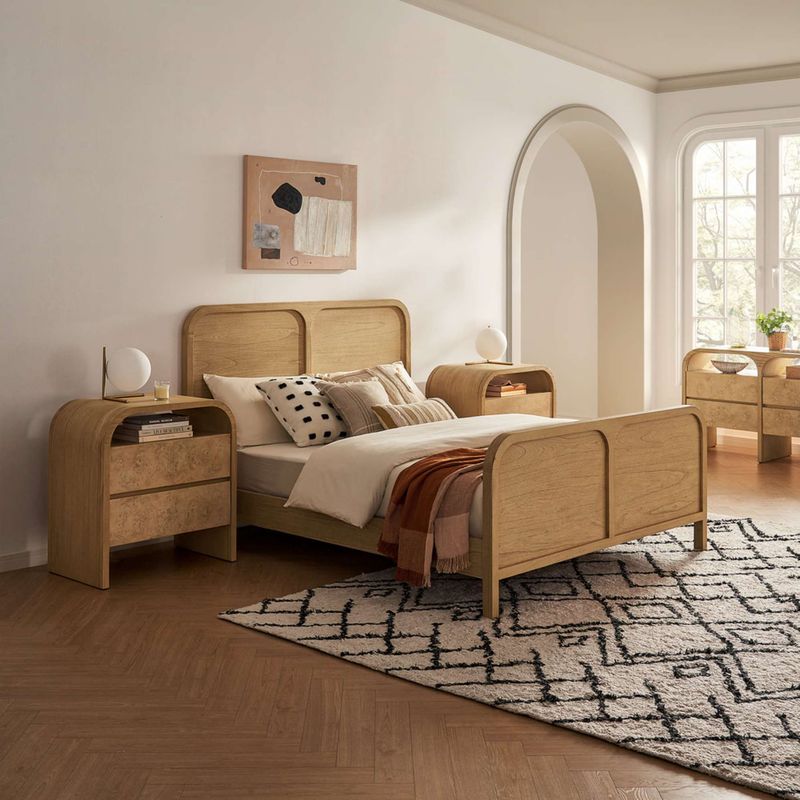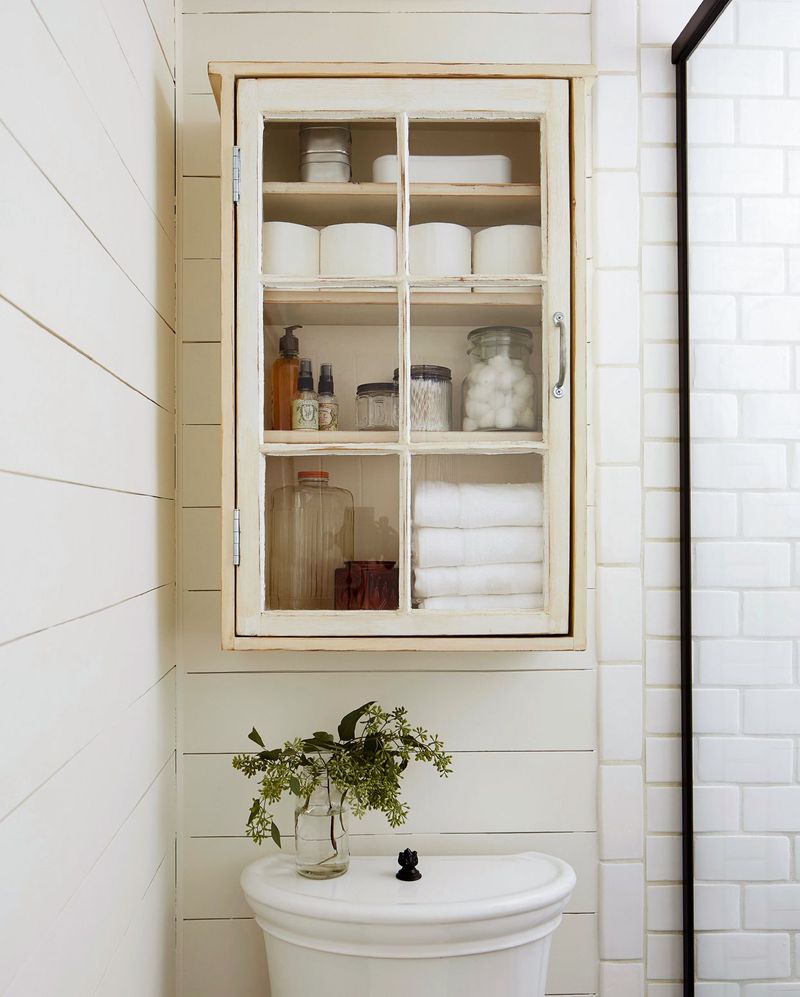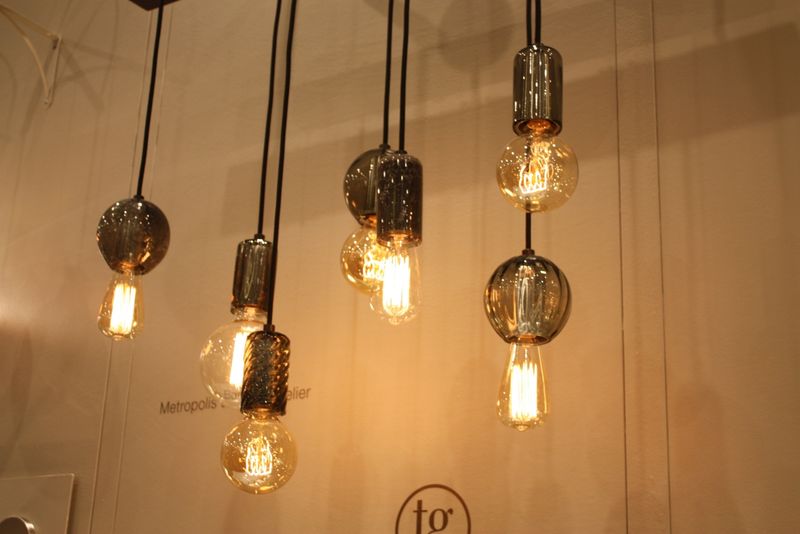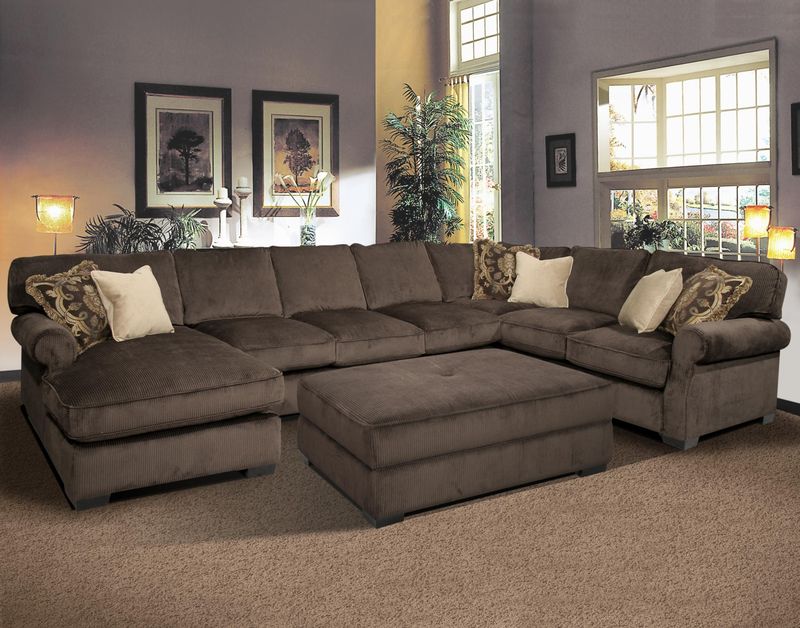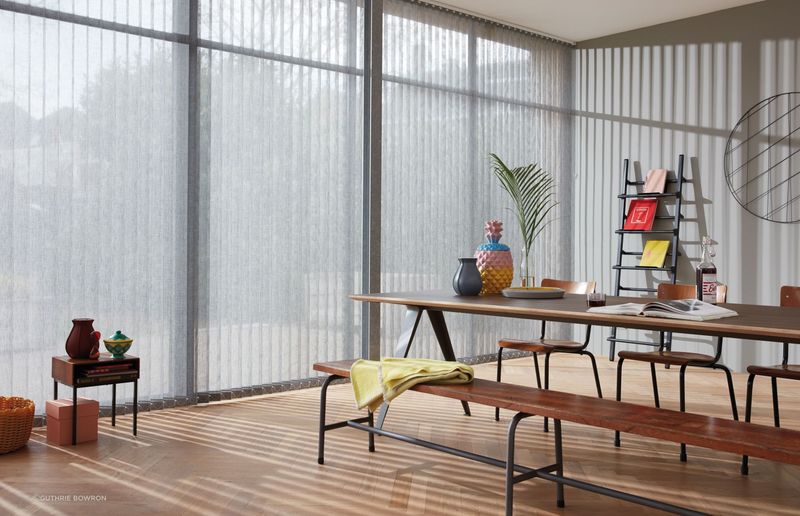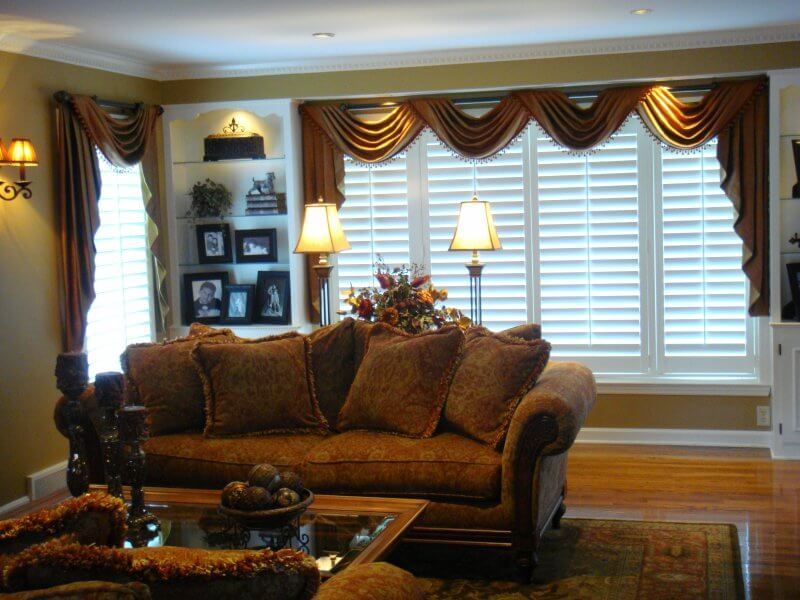Even the most stylish homes can fall victim to decor choices that quietly drag the space down. Trends shift, tastes evolve, and what once felt fresh can quickly start to feel tired or out of place.
Designers constantly see the same repeat offenders – items that homeowners hold onto even when it’s time to let go.
If your goal is a home that feels current, inviting, and well-curated, it might be time for a little edit. These 19 decor items are well worth reconsidering, according to the pros.
1. Word Art Signs
You’ve probably spotted them everywhere – those wooden signs declaring “Live, Laugh, Love” or “Home Sweet Home.” While they once offered charming sentiments, designers now view them as cliché fillers rather than meaningful decor.
Consider replacing generic phrases with personal mementos or actual artwork that speaks to your unique taste. A vintage map, family photo, or local artist’s piece creates more authentic character in your space.
2. All-White Kitchens
Remember when every home renovation show featured pristine white cabinets, countertops, and backsplashes? While bright and clean-looking, all-white kitchens have fallen from designers’ favor.
The clinical feel and impractical maintenance make them less appealing for real-life cooking spaces. Many professionals now recommend incorporating warm wood tones, colorful islands, or statement backsplashes to create visual interest and hide inevitable stains.
3. Mason Jar Everything
From drinking glasses to bathroom organizers, mason jars had quite the moment in home decor. Their rustic charm initially appealed to the farmhouse aesthetic crowd, but designers suggest limiting their use.
Instead of filling every shelf with these glass containers, try incorporating more sophisticated glassware or purpose-built storage solutions. Save the mason jars for actual canning or the occasional flower arrangement where their casual vibe makes sense.
4. Fake Plants That Look Fake
Artificial greenery has come a long way, but those obviously plastic plants aren’t fooling anyone. Low-quality faux plants collect dust and add a tacky element to otherwise lovely rooms.
If you lack a green thumb, invest in high-quality silk plants or explore low-maintenance live options like snake plants or ZZ plants. Modern designers prefer the authentic texture and air-purifying benefits of real plants over unconvincing imitations.
5. Matching Furniture Sets
Walking into a home where every piece of furniture in a room comes from the same collection feels like visiting a showroom, not a lived-in space. These perfectly coordinated sets lack the personality and layered look that designers love.
Try mixing complementary styles, textures, and even eras for a more collected feel. Pairing vintage finds with contemporary pieces creates visual interest and tells a more compelling story about your personal style.
6. Tuscan Kitchen Decor
Heavy wrought iron, faux painting techniques, and grape motifs once dominated American kitchens attempting Mediterranean flair. This trend peaked in the early 2000s and now feels distinctly outdated.
For a more current take on warm kitchen design, designers suggest cleaner lines with thoughtful touches of texture and color. Natural materials like stone and wood can evoke Mediterranean warmth without the themed excess.
7. Over-the-Toilet Wall Cabinets
Those bulky cabinets that hover above toilets were once bathroom staples but now make spaces feel cramped and dated. They often collect dust and rarely provide the kind of storage that modern bathrooms need.
Designers prefer floating shelves, sleek medicine cabinets, or freestanding storage solutions that don’t overwhelm the toilet area. These alternatives create a more open feeling while still providing practical storage for essentials.
8. Industrial Edison Bulbs
The exposed filament look exploded in popularity alongside industrial and farmhouse trends. While initially striking, bare Edison bulbs often provide harsh, unflattering light and consume more energy than modern alternatives.
Design professionals now lean toward fixtures that incorporate softer lighting solutions. If you love the warmth of Edison-style bulbs, consider versions with frosted glass or fixtures that partially shield the bulb for a more sophisticated take.
9. Chevron Patterns
The zigzag chevron pattern dominated everything from rugs to accent walls around 2013. What once felt fresh now immediately dates a space to that specific design era.
If you enjoy geometric patterns, designers suggest more timeless options like stripes, herringbone, or subtle Greek key designs. These alternatives provide visual interest without the strong association to a particular trend moment.
10. TV Above Fireplace
When flat screens first became popular, mounting them above fireplaces seemed like a space-saving solution. However, designers now caution against this arrangement for both practical and aesthetic reasons.
The viewing angle typically forces uncomfortable neck strain, while heat from the fireplace can damage electronics. Consider alternative arrangements that create separate focal points or specialized TV furniture that better integrates technology into your living space.
11. Oversized Clocks
Giant wall clocks with exaggerated numerals had their moment as statement pieces. Now they often read as unnecessary space-fillers rather than thoughtful decor choices.
For wall decor with more staying power, designers recommend investing in meaningful art pieces. If you appreciate functional timepieces, consider more subtle desk or mantel clocks that serve their purpose without dominating the visual landscape.
12. Vessel Sinks
Those bowl-like sinks that sit atop bathroom counters initially wowed homeowners with their sculptural appeal. In practice, they’ve proven problematic – splashing water, difficult cleaning, and awkward heights make them less functional than traditional options.
Contemporary designers favor undermount or integrated sink designs that offer cleaner lines and easier maintenance. These alternatives provide the modern aesthetic without sacrificing the practicality needed in busy bathrooms.
13. Granite Countertops
Once the gold standard in kitchen renovations, heavily speckled granite countertops now signal a dated kitchen. The busy patterns and glossy finish that dominated early 2000s homes have fallen out of designers’ favor.
Modern kitchens feature quieter surfaces like honed marble, engineered quartz, or even concrete. These alternatives offer cleaner looks with often better durability and stain resistance than their granite predecessors.
14. Overstuffed Sectionals
Those enormous, puffy sectional sofas that dominated family rooms in the 2000s are no longer designer favorites. While comfortable, they overwhelm spaces and create a heavy, dated look in living areas.
Today’s designers prefer more tailored seating with clean lines that still prioritize comfort. Modular pieces that can be reconfigured or smaller-scale sectionals that don’t dominate the entire room allow for more versatile and visually pleasing arrangements.
15. Vertical Blinds
Nothing says “rental apartment from 1992” quite like those dangling plastic strips that clack together with every breeze. Vertical blinds were once ubiquitous for sliding doors and large windows but now look decidedly outdated.
Window treatment upgrades like panel curtains, roller shades, or modern horizontal blinds offer better light control and style.
16. Poufy Valances
Those gathered fabric window toppers that dominated 1980s and 1990s homes haven’t aged well. Fussy, dust-collecting valances with swags and jabots create visual clutter and block natural light.
Modern window treatments favor simplicity and function with clean-lined curtains that frame windows beautifully. If you want to add interest, designers suggest subtle details like banding or textured fabrics rather than elaborate gathering and draping.
17. Shag Carpeting
While plush underfoot, wall-to-wall shag carpeting has fallen firmly out of favor with design professionals. These deep-pile floors trap dust, allergens, and odors while proving nearly impossible to clean thoroughly.
Today’s flooring trends lean toward hardwood, luxury vinyl, or tile with strategically placed area rugs. This approach offers easier maintenance and greater flexibility to update your look without major renovations.
18. Mirrored Furniture
Those reflective dressers, nightstands, and console tables that promised to make spaces look larger have lost their luster. Highly mirrored furniture shows every fingerprint and often reads as trendy rather than timeless.
For pieces with staying power, designers recommend quality wood furniture with interesting grain patterns or painted finishes. If you love reflective elements, incorporate them more subtly through lamps, picture frames, or traditional mirrors meant for viewing.

